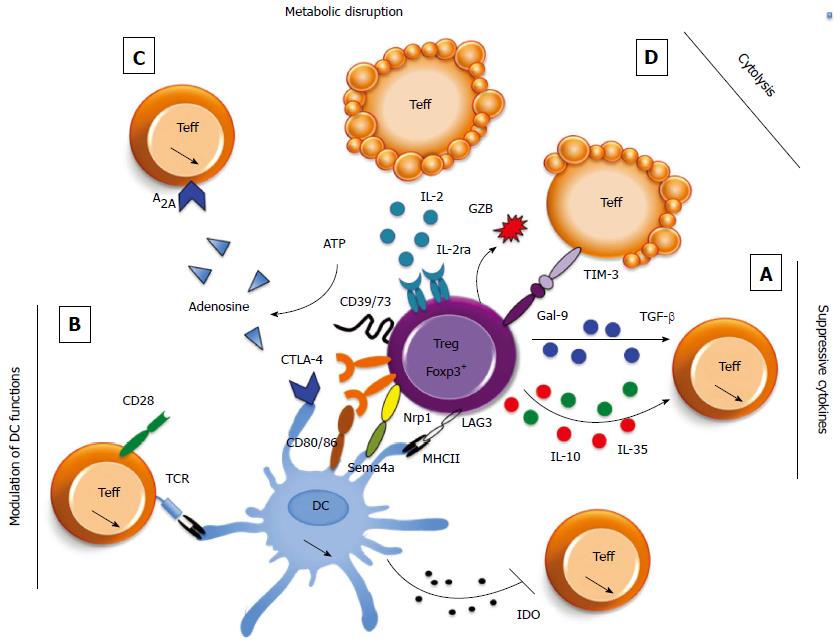Copyright
©The Author(s) 2016.
World J Gastroenterol. Jan 21, 2016; 22(3): 974-995
Published online Jan 21, 2016. doi: 10.3748/wjg.v22.i3.974
Published online Jan 21, 2016. doi: 10.3748/wjg.v22.i3.974
Figure 1 Regulatory T cells control immune responses through a large panel of suppressive mechanisms.
In order to control Teff functions, regulatory T cells (Tregs) can use diverse immunosuppressive strategies: A: Treg suppression can be mediated through the inhibitory cytokines IL-10, IL-35, and TGF-β; B: Tregs can modulate DC maturation or function through the interaction of CTLA-4, LAG-3 and Nrp1 expressed by Tregs and the CD80/86 costimulatory molecules, MHC class II and Sema4a expressed by DC, respectively leading to IDO production and preventing DC maturation and Teff activation; C: Tregs can disrupt metabolic functions through the expression of the ectoenzymes CD39/73 allowing adenosine generation, or by IL-2 deprivation; D: Tregs can also induce direct killing of Teff through the production of granzyme B (GZB) or via the interaction between Gal-9 expressed by Tregs and Tim-3 expressed by Teff.
- Citation: Pedros C, Duguet F, Saoudi A, Chabod M. Disrupted regulatory T cell homeostasis in inflammatory bowel diseases. World J Gastroenterol 2016; 22(3): 974-995
- URL: https://www.wjgnet.com/1007-9327/full/v22/i3/974.htm
- DOI: https://dx.doi.org/10.3748/wjg.v22.i3.974









